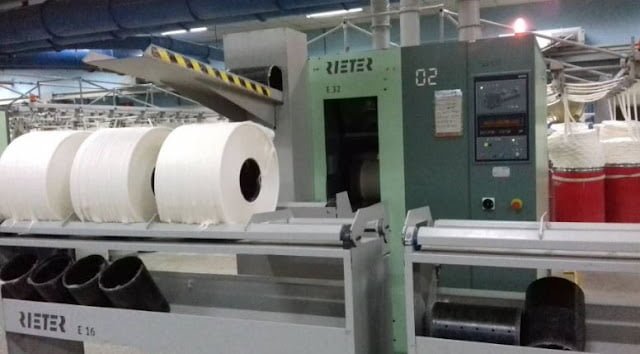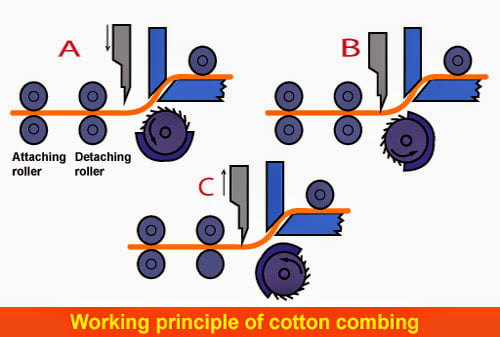Combing: Definition, Objects and Necessity
Last updated on March 16th, 2024 at 10:07 pm
Definition of Textile Combing
The combing process is carried out in order to improve the quality of the sliver coming out of the card. The process eliminates short fibres, it achieves better parallelization of fibres, it straightens curls, and it removes neps and residue impurities. The combing process is essentially aimed at obtaining excellent quality yarns. Depending on what is being produced, waste from combing varies from 12% to 25%, and this can be employed to obtain yarns with a medium-coarse count using the open-end process.

So, we can say that the process of straightening parallelizing and the removal of short fibres and impurities by using a comb assisted by brushes and rollers is called combing.
Objects of Combing
- To remove the fibre shorter than a pre-determined length so as to enable the spinner to produce finer yarn.
- To remove remaining impurities in pre-comber lap, this helps in producing cleaner yarn.
- To remove neps in the carded sliver.
- To make the fibre more parallel and straighter, so that the yarn becomes more even and lusture.
- Finally produce a uniform sliver of required weight per unit length and collect into a can in coil form.
Necessity of Combing
- For finer count, high draft is required but draft irregularity for presence of short fibre. After combing short fibre free product (sliver/roving) is ready for higher draft.
- Longer fibres are finer than short fibres. After combing higher count is possible to keep minimum no of fibre in yarn dia. Ring spinning system at least 60-65 no of fibre. Rotor spinning system more than 80 no of fibre.
- Long fibre yarn has less hairiness but more luster.
- Combing is necessary for better yarn appearance and regularity.
- Less twist for finer yarn but more twist required in presence of short fibre to remove this.




I ‘d mention that most of us visitors are endowed to exist in a fabulous place with very many wonderful individuals with very helpful things.